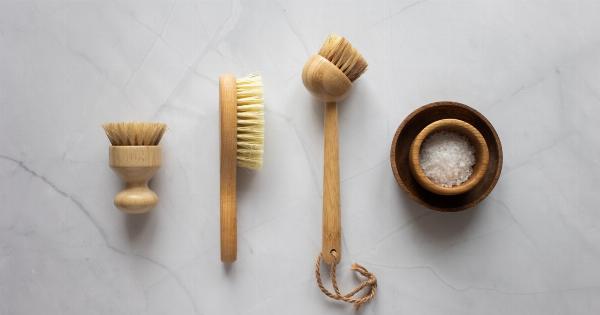Musculoskeletal conditions refer to injuries or disorders that affect the bones, muscles, tendons, ligaments, and nerves. These conditions can affect people of all ages and can be caused by various factors, including trauma, overuse, and aging.
Traditional treatment options for musculoskeletal conditions include medication, physical therapy, and surgery. However, these options are not always effective, and some people may not be able to tolerate the side effects of medications or may not be suitable candidates for surgery.
Fortunately, there are alternative options available for treating musculoskeletal conditions. In this article, we will discuss some of these alternative options and their benefits.
Chiropractic Care
Chiropractic care involves the diagnosis and treatment of musculoskeletal conditions using manual manipulation of the spine and other joints.
Chiropractors believe that misalignment of the spine can cause a variety of health problems, including musculoskeletal conditions. By using gentle and controlled movements, chiropractors can realign the joints and relieve pain and discomfort. Chiropractic care is non-invasive, and many patients find it to be a safe and effective alternative to traditional treatment options.
Massage Therapy
Massage therapy is a form of manual therapy that involves the manipulation of soft tissue, including muscles, tendons, and ligaments. Massage can help to reduce muscle tension, improve circulation, and promote relaxation.
This can be especially beneficial for people with musculoskeletal conditions, as it can help to relieve pain and stiffness. Massage therapy is non-invasive and can be used in combination with other therapies, such as chiropractic care or physical therapy, to enhance their effectiveness.
Acupuncture
Acupuncture is an ancient form of Chinese medicine that involves the insertion of thin needles into specific points on the body. This can help to relieve pain and improve the function of the musculoskeletal system.
Acupuncture is believed to work by stimulating the flow of energy, or Qi, through the body, which can help to relieve tension and promote healing. Acupuncture is non-invasive and can be used in combination with other therapies, such as chiropractic care or massage therapy, to enhance their effectiveness.
Herbal Medicine
Herbal medicine involves the use of plants and plant extracts to treat various health conditions, including musculoskeletal conditions.
Certain herbs have anti-inflammatory and analgesic properties, which can help to relieve pain and inflammation in the joints and muscles. Herbal medicine can be taken orally or used topically, and can be used in combination with other therapies, such as chiropractic care or massage therapy, to enhance their effectiveness.
Yoga
Yoga is a form of exercise that involves the use of stretching, breathing, and relaxation techniques to improve the function of the musculoskeletal system.
Yoga can help to improve flexibility, strength, balance, and posture, which can all contribute to the prevention and treatment of musculoskeletal conditions. Yoga is non-invasive and can be adapted to suit the individual needs of each patient.
Pilates
Pilates is a form of exercise that involves the use of controlled movements to improve the strength and flexibility of the muscles and joints.
Pilates can help to improve posture, balance, and core strength, which can all contribute to the prevention and treatment of musculoskeletal conditions. Pilates is non-invasive and can be adapted to suit the individual needs of each patient.
Hydrotherapy
Hydrotherapy involves the use of water to treat musculoskeletal conditions. Hydrotherapy can include exercises performed in a pool or other body of water, as well as the use of hot or cold water to relieve pain and inflammation.
Hydrotherapy can be especially beneficial for patients with arthritis or other conditions that cause joint pain and stiffness. Hydrotherapy is non-invasive and can be used in combination with other therapies, such as chiropractic care or massage therapy, to enhance their effectiveness.
Craniosacral Therapy
Craniosacral therapy is a form of manual therapy that involves the manipulation of the bones and tissues of the skull and spine.
Craniosacral therapy can help to improve the function of the central nervous system, which can contribute to the prevention and treatment of musculoskeletal conditions. Craniosacral therapy is non-invasive and can be used in combination with other therapies, such as chiropractic care or massage therapy, to enhance their effectiveness.
Homeopathy
Homeopathy is an alternative form of medicine that involves the use of highly diluted substances to stimulate the body’s natural healing processes.
Homeopathic remedies can be used to treat a variety of health conditions, including musculoskeletal conditions. Homeopathy is non-invasive and can be used in combination with other therapies, such as chiropractic care or massage therapy, to enhance their effectiveness.
Conclusion
Alternative options for treating musculoskeletal conditions can offer safe and effective alternatives to traditional treatment options.
Chiropractic care, massage therapy, acupuncture, herbal medicine, yoga, Pilates, hydrotherapy, craniosacral therapy, and homeopathy are just a few of the many alternative options available. Each of these options has its own set of benefits and potential drawbacks, and it is important to work with a qualified healthcare provider to determine the best course of treatment for your individual needs.

























